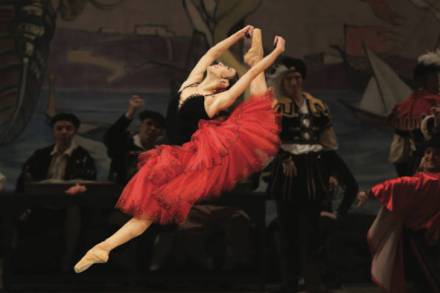Always look on the dark side of life
Hampstead’s boss Ed Hall was so impressed by Stephen Karam’s play The Humans that he wanted to direct it himself. Instead, thanks to a stunning series of accidents, he was able to bring the original Tony award-winning production from Broadway to London. And here it is, directed by Joe Mantello. It’s a family drama, which opens with Dad and Mom, in their sixties, arriving for Thanksgiving at a dingy New York apartment occupied by their daughter Brigid and her fiancé Richard. All the characters are heavily scarred by life. Richard, aged 38, hasn’t yet completed his sociology degree because he suffers from severe depression (possibly triggered by his subject choice,




















